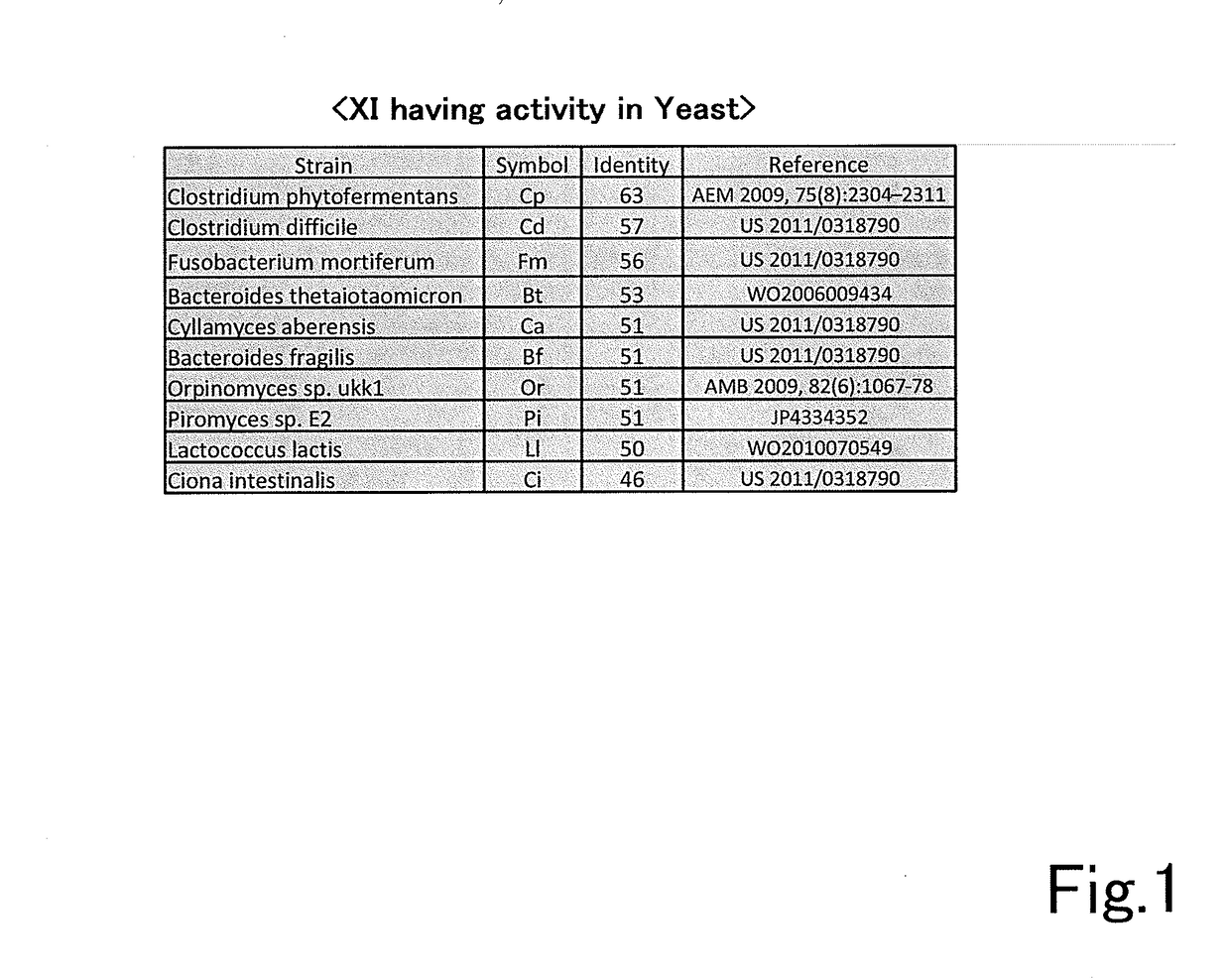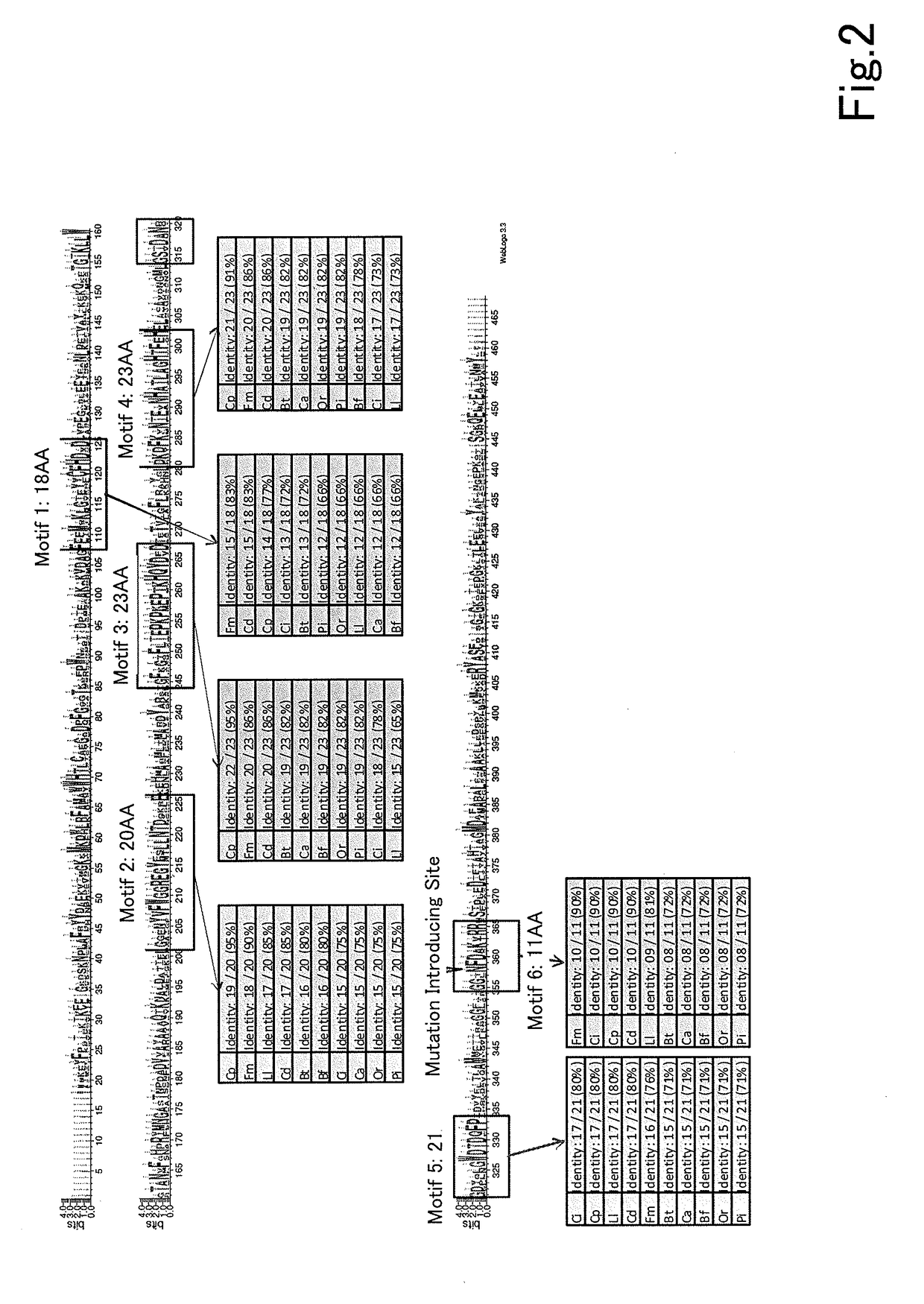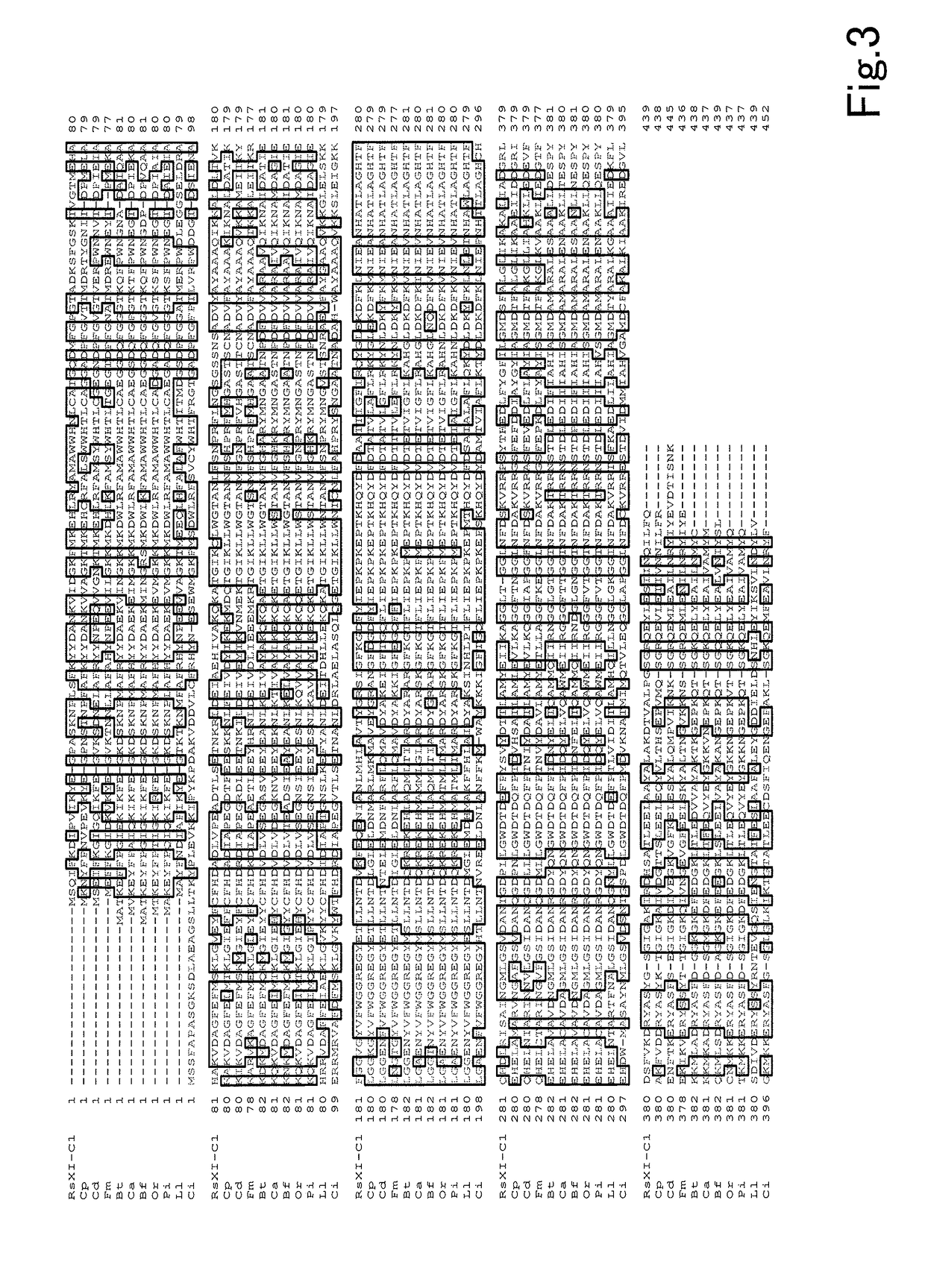Protein having xylose isomerase activity and use of same
a technology of isomerase activity and protein, which is applied in the field of proteins having isomerase activity, can solve the problems of low xylose consumption rate of an xi in patent literature 1 and non-patent literature 1 and achieve the effect of improving the xylose fermentation ability of yeas
- Summary
- Abstract
- Description
- Claims
- Application Information
AI Technical Summary
Problems solved by technology
Method used
Image
Examples
embodiments
[0137]The present teaching is explained in detail below using examples, but the present invention is not limited by these examples. The genetic recombination operations described below were performed in accordance with Molecular Cloning: A Laboratory Manual (T. Maniatis, et al., Cold Spring Harbor Laboratory)
[0138]The compositions of culture media used in the following Examples are as follows:
SD agar culture medium: 6.7 g / L Yeast Nitorogen Base without amino acid, 20 g / L D-Glucose, and 20 g / L Agar
SX liquid culture medium: 6.7 g / L Yeast Nitorogen Base without amino acid, and 20 g / L D-Xylose
SX agar culture medium: 6.7 g / L Yeast Nitorogen Base without amino acid, 20 g / L D-Xylose, and 20 g / L Agar
SX liquid culture medium 50: 6.7 g / L Yeast Nitorogen Base without amino acid, and 50 g / L D-Xylose
first embodiment
[0139](Introduction of Mutation in RsXI Gene by Error-Prone PCR)
[0140]An error-prone PCR was carried out using GeneMorphII (by Stratagene) with pRS436GAP-RsXIC1-O, to which a xylose isomerase gene RsXI-C1-opt (GenBank: HV438143) originated from an enteric protist of Reticulitermes speratus optimized to a yeast codon was inserted, as a template. The reaction was carried out for 30 cycles with a cycle of at 95 deg C. for 2 min, 95 deg C. for 1 min, 60 deg C. for 1 min, and 72 deg C. for 1 min 30 sec, and followed by a reaction at 72 deg C. for 10 min. The sequences of the used primers were as follows:
pRSSacII-AAA-ATG-F4:(SEQ ID NO: 41)5′-GAACTTAGTTTCGAATAAACACACATAAACAAACAAACCGCGGAAAATG-3′,andpRSXhoI-TAA-R3:(SEQ ID NO: 42)5′-GTGAATGTAAGCGTGACATAACTAATTACATGATGCGGCCCTCGAGTTA-3′.
[0141]An amplified DNA fragment was cloned to PCR-Blunt II TOPO using a Zero Blunt TOPO PCR cloning kit (by Invitrogen) and the inserted DNA fragment was analyzed. As the result, it was confirmed that average 3 ...
second embodiment
[0142](Construction of Yeast Gene Expression-Basic Plasmid)
[0143]A low-copy type transgenic vector pRS316GAP was constructed. A PCR was conducted with pRS436GAP (DDBJ accession number: AB304862) as a template using primers TDH3p-CYC1t-IF-F and R. The PCR was carried out using a PrimeSTAR HS DNA polymerase (Takara Bio Inc.) with a cycle of at 98 deg C. for 10 sec, 55 deg C. for 15 sec, 72 deg C. for 1 min 30 sec and by repeating 30 cycles. The sequences of the used primers were as follows:
TDH3p-CYC1t-IF-F:(SEQ ID NO: 43)5′-TCGCTATTACGCCAGCTGGCGAAAGGGGGATGTGC-3′,andTDH3p-CYC1t-IF-R:(SEQ ID NO: 44)5′-GATTCATTAATGCAGCTGGCACGACAGGTTTCCCGACTGGAAAGC-3′.
[0144]The produced DNA fragment was inserted using an In-Fusion Advantage PCR cloning kit (Takara Bio Inc.) in pRS316 (NBRP accession number: BYP562) digested by a restriction enzyme PvuII. The obtained plasmid was designated as pRS316GAP.
PUM
 Login to View More
Login to View More Abstract
Description
Claims
Application Information
 Login to View More
Login to View More - R&D
- Intellectual Property
- Life Sciences
- Materials
- Tech Scout
- Unparalleled Data Quality
- Higher Quality Content
- 60% Fewer Hallucinations
Browse by: Latest US Patents, China's latest patents, Technical Efficacy Thesaurus, Application Domain, Technology Topic, Popular Technical Reports.
© 2025 PatSnap. All rights reserved.Legal|Privacy policy|Modern Slavery Act Transparency Statement|Sitemap|About US| Contact US: help@patsnap.com



